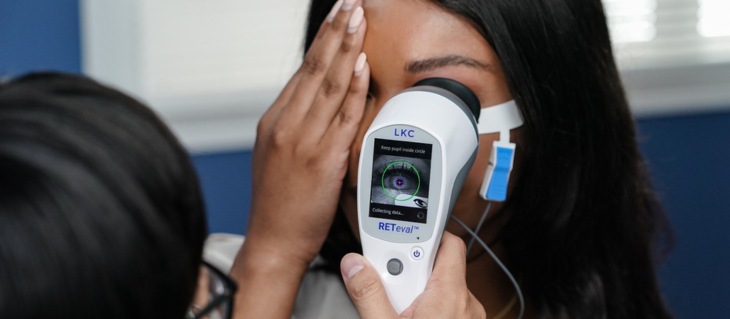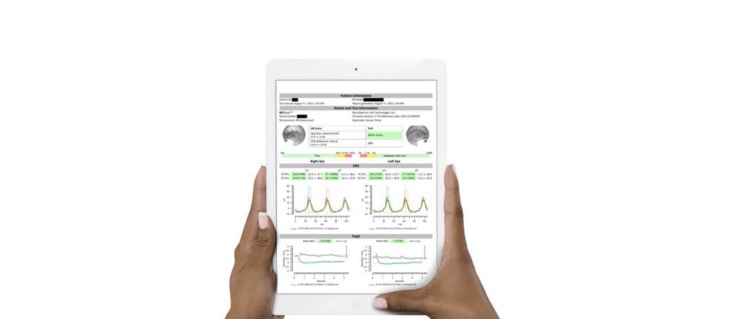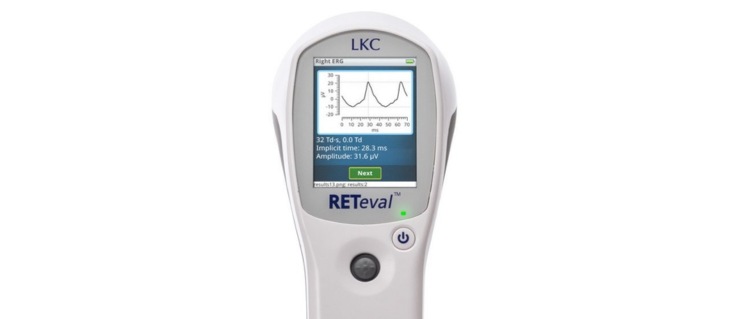The eye is a very complex organ. Besides being the organ of vision, many problems can occur with it. According to the American Optometric Association, comprehensive eye exams can “identify early warning signs and manifestations” of over 270 diseases, including diabetes, cancers, cardiovascular disease, and much more. This means that using the correct diagnostic tests to cover all bases is essential. Introduced in 2013, the RETeval ERG is a handheld device that tests the electrical function of the retina. The retina is located in the back of the eye and converts light into electrical signals. These electrical signals are then transferred to the brain and processed in the occipital lobe, helping you process visual images. Similar to ECGs (electrocardiogram) and EEG (electroencephalogram), the ERG measures electrical signals to determine whether the retina is functioning correctly.
For patients, the ERG test consists of the following steps:
1. The technician will sit you down and put little sticky sensory strips below your eyelids. These strips will collect the electrical signals sent back from the retina.
2. Using the handheld device, the technician will hold up the device close to your eye and will start the test.
3. As a patient, you will see a red light in the middle to look at throughout the test. Additionally, you will see flashes of light to look at as well.

After the test, the doctor will receive results from the machine and a full report to examine any abnormalities.

Although extremely complex, the results of the ERG test can be boiled down to two key components: the strength and rate of electrical activity from the retina. The strength, or amplitude of the electrical response measures whether cells can respond with enough energy. If the amplitude value is lower than normal, this can indicate cellular damage or death. The rate of electrical activity, known as implicit time, measures how quickly the cells in the retina respond to light. Cells should respond quickly to light, with higher implicit times meaning that cells are stressed. All of this data is extremely important because studies have proven that the function of the retina changes before structural damage occurs. This means that doctors can detect disease progression of glaucoma or diabetic retinopathy earlier by checking the function of the retina. Further, doctors can detect diseases before they have structural impact or symptoms by using the ERG test. It is important as a patient to understand the tools available to doctors for diagnosis, because they can help create preventative measures to stop diseases progressing. If you are going to an eye exam, make sure to ask your doctor about the health of your retina. At KapoorEyeCare, we continually invest in state-of-the-art technologies to enhance disease prevention. Call to schedule an appointment and learn more about your eye health today!
Sources:
1. https://www.aoa.org/healthy-eyes/caring-for-your-eyes/full-picture-of-eye-health
2. https://www.aspirevisioncare.com/eye-care-services/eye-exams-can-diagnose-over-170-diseases/
4. https://store.lkc.com/sensor-strips-box-of-50-pairs/



